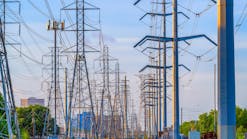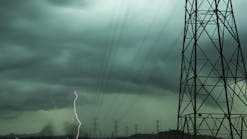Hurricane Beryl Ravages Texas Coast, Leaving Widespread Damage and Power Outages
Tropical Storm Beryl has unleashed heavy rains and powerful winds along the Texas coast, leading to widespread power outages affecting nearly 3 million homes and businesses. Streets are inundated with rapidly rising waters, prompting urgent rescue efforts as first responders work tirelessly to aid stranded residents.
Beryl made landfall near Matagorda, Texas, early Monday morning as a Category 1 hurricane, with maximum sustained winds of 80 mph, according to AccuWeather meteorologists. The storm's powerful winds and storm surge pushed several feet of water into coastal areas killing at least three people. The National Hurricane Center said Monday evening, the storm moved east and later weakened to a tropical depression.
“We’re not past any difficult conditions,” said Texas Lt. Gov. Dan Patrick, who is acting governor while Gov. Greg Abbott is out of the country, warning it would be a ”multiple day process to get power restored.”
According to AP News, Texas state and local officials warned it could take several days to restore power after Beryl came ashore as a Category 1 hurricane and toppled 10 transmission lines and knocked down trees that took down power lines.
In Houston, where previous storms had already washed out neighborhoods, television stations on Monday broadcast dramatic rescues of residents trapped in fast-flowing floodwaters. Emergency crews used extension ladders from fire trucks to rescue people stranded on roofs and vehicles.
The impact on the power grid has been severe, with more than 2 million customers in the Houston area left without electricity, according to CenterPoint Energy officials. Entergy Texas has also reported widespread outages, affecting emergency services and leaving many without access to essential facilities like cooling centers and healthcare facilities.
CenterPoint Energy and Entergy Texas have activated emergency response plans, but restoration efforts are hindered by ongoing high winds and flooding. Crews are prioritizing critical facilities such as hospitals and police stations, followed by larger customer blocks and neighborhoods, before individual services can be restored.
AccuWeather meteorologists warn that the threat of flash flooding and tornadoes will persist as Beryl moves inland. The storm has already dumped significant rainfall, with areas near its landfall location in east-central Texas receiving 8 to 12 inches. The risk extends as far north as Detroit, more than 1,100 miles from where Beryl made landfall. The National Weather Service confirmed on social media that tornadoes had been spotted in northeastern Louisiana.
Hurricane Beryl underscores the importance of safety precautions, especially regarding generator use. Improper use of generators can lead to carbon monoxide poisoning, electrocution, and fires. AccuWeather expert meteorologists encourage residents to report downed power lines immediately and avoid flooded areas where electrical hazards may be present.
According to the White House, President Joe Biden is receiving regular updates on the storm's impact, and federal agencies including the U.S. Coast Guard and FEMA have mobilized search and rescue teams. FEMA has prepositioned resources like bottled water, meals, tarps, and electric generators in anticipation of further needs.
Looking ahead, meteorologists are closely monitoring the Gulf of Mexico for potential future storms, as warm sea temperatures continue to fuel hurricane development. AccuWeather forecasts predict an active hurricane season with 20 to 25 named storms and multiple impacts on the United States.
As Texas braces for ongoing challenges from Hurricane Beryl, communities are encouraged to stay informed and heed safety warnings from local authorities. The resilience and preparedness of residents and emergency services will be crucial in managing the aftermath of this devastating storm.



